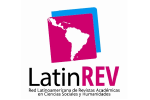Religious art in Ecuador: connotations of good and evil
DOI:
https://doi.org/10.18537/ripa.10.09Keywords:
Religion, art, culture, hell, iconographic, symbologyAbstract
This text proposes an oncoming of the symbology showed in the Ecuadorian´s religious paintings. For this framework two religious paintings located in the Principal Zaruma´s church and the Compañía´s church in Quito were chosen as an example, each one has as a principal thematic: the hell and the final judgment. The objective of this investigation is to generate a comparative analysis of the variety of elements and thematics that the paintings show. The main purpose of this article is to establish the connections through the biblical stories, to show the fantastic - mythological characteristics and how they are a christian culture now. Therefore, this investigation is going to have an explanation and interpretation of the symbols and concepts that each painting has, due to an iconographic study, such as to define the contact points between the paintings and how these become a recurring symbol within each cultural context.
Downloads
References
Arias, Y., & Franco, J. (2015). Resemantización de los símbolos religiosos en el anime neón génesis evangelión. Cartagena: Universidad de Cartagena.
Dictionaries, O. L. (2017). Español. (O. U. Press, Editor). Recuperado el 09 de octubre de 2017, de https://es.oxforddictionaries.com/definicion/critica
Eco, U. (2007). Historia de la Fealdad. Barcelona: Lumen.
López, P. (2011). Dios en el arte actual: síntomas de trascendencia en el arte contemporáneo. Depósito Digital de la UFV, 1-15.
Maritain, J. (1924). Reflexiones sobre el arte religioso. Jornadas de Arte Religioso.
Merchán, A. A. (2002). Ángeles, enigma y belleza. Cuenca: Banco Central del Ecuador.
Orellana, F. (2013). El diablo y su posicionamiento en la posmodernidad: una reflexión desde la teoría social. Revista de Humanidades y Ciencias Sociales(28), 189-208.
Santa Biblia. Versión Verbo Divino, 2005.
Published
Issue
Section
License

This work is licensed under a Creative Commons Attribution-NonCommercial-ShareAlike 4.0 International License.










